We all know the big elaborate cities of Iran, it’s capital Tehran, Isfahan ‘the half of the world’ and Shiraz home to the colourful ‘Pink Mosque’, but what about Iran’s lesser-known destinations? Specifically, the beautiful and unique villages of Iran? In this comprehensive guide we will take you on a journey to these magical places and explain why they should be on your bucket list.
Makhunik
Makhunik, located 75km from the border with Afghanistan is often called ‘the Lilliput of Iran’ due to the fact that the inhabitants of this strange village were once only around one metre in height. Until the advent of vehicular transportation the village of Makhunik was extremely isolated which led to malnutrition, marriage between close relatives and drinking water laced with mercury all of which once contributed to the short stature of the residents.
The vast majority of Makhunik’s 700 residents live in tiny, partially subterranean troglodyte houses. The houses are not only built in this style because it is much easier to cool and heat smaller houses, but in previous ages this also helped the village blend in with the landscape giving in it kind of camouflage from potential invaders.
The residents of this village have quite strange customs compared to the rest of the country, most notably they don’t drink tea. Tea drinking in Iran is a huge part of Persian culture and social custom and has been for many centuries. Mukhunik’s residents liken tea drinking to opium addiction. The residents also do not eat meat, smoke or watch television making this one of the most unique villages of Iran.
Garmeh
Ever wanted to visit a real desert oasis? Well, this is what awaits visitors to desert villages of Iran like Garmeh. Located in Iran’s central desert, Dasht-e Kavir and close to Isfahan, Garmeh is the perfect location from which to organise a safari into the wilds of the desert.
The documented history of human settlement in the area dates back over 4000 years and archaeological evidence supports habitation from up to 7000 years ago. The oasis town of Garmeh, in more recent times, was an important stop on the silk road trading route between China and Europe and many travellers passed through this area.
The village itself is home to an ancient castle, beautiful palm groves and a lake that is perfect for nature lovers. It is also the perfect spot from which to visit the neighbouring smaller villages of Mesr and Farahzad.
The village buildings are elaborate mud-brick adobe style structures and look out over palms and the desert plain. Garmeh is a great place to spend the night and you can stay in an adobe hotel which is over a thousand years old, an amazing unique experience. You can also listen to local musicians who play a woodwind instrument similar to the Digeridoo of the Australian First Nations people.
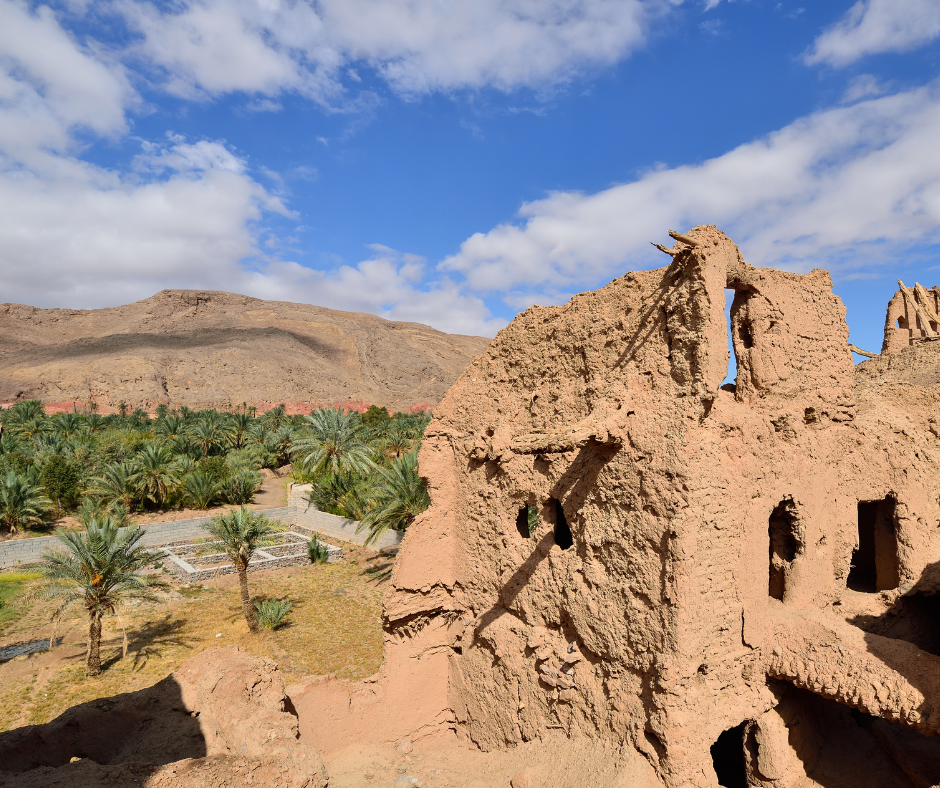
Nay Band
Nay band is a thousand-year-old ‘Pelekani’ (staircase) style village located in the province of Khorasani. Local texts state that in the time of the Afghan invasion into Iran, Beder Shah Afshar camped in the ‘Land of the Naybandan’ a heaven like land in the heart of the desert located over a thousand metres above sea level.
The staircase style villages of Iran are built in such a way that the roofs of the houses on the lower levels act as the streets for the houses on the level above. Nay Band village has been built on a megalith at the foot of Nayband Mountain, part of a series of mountains that have prevented the treacherous Lut Desert from expanding.
Nay band is surrounded by a 300-year-old citadel which protects the village and while well protected the stone-ground of Nay band does not permit the digging of foundations or wells to get water. Water for the village and irrigation is provided by warm and cold springs and ‘Qanats’ a kind of underground irrigation system. This has also meant that facilities like kitchens, bathrooms and stables have been exceptionally hard to build and are located between houses for different families to use.
Meymand
One of the most ancient villages of Iran, there is evidence of human habitation in this area dating back 12 000 years. Today’s residents of Maymand now live in 350 hand-dug houses in the rocks which have been inhabited for 3000 years. Different theories as to the origins of these houses have been proposed, the most likely is that they were originally used as grottos for people of the Mithras religion. These people once visited the site for religious pilgrimage and over the years eventually moved in and became of permanent residents.
The living conditions in Meymand are harsh due to very cold winters and aridity of the area. The people of the village speak a different dialect to those in the rest of the country, the language still contains fragments of the ancient Sassanid and Pahlavi languages. In 2005 Meymand was awarded the UNESCO-Greece Melina International Prize for the Safeguarding and Management of Cultural Landscapes and in 2015 was added to the UNESCO World Heritage sites list.
There are two parts to the village of Meymand. In the warmer months the people live in temporary houses and then move into the cave houses to survive the coldness of winter. The villagers practice their way of life in accordance with a transhumance system. The area consists of a number of settlements each of which are designed in compliance with the environment and the seasons in which the residents are hosted.
Kharanaq

The famous vibrating village of Iran! Well that reputation is somewhat untrue. Meaning ‘Land of the Sun’ Kharanaq actually gets is reputation from the shaking minaret of its local mosque. The minaret is one of three moving minarets designed during the Seljuk period and is designed in a special way so it can move. You can make the minaret move by giving it a gentle push on the upper part.
The village is 4500 years old and is surrounded by mountains on one side and desert on the other. The old village of Kharanaq is mostly abandoned and ramshackle, however new village is still inhabited. Worth a visit is the Kharanaq Caravanserai which dates to the Sassanian Dynasty and was once a lodge for travellers traversing the Silk Road. The bridge of Kharanaq is also worth a visit, surrounded in myth it is the only bridge in this province and only existed to transfer water from the seasonal river to farms.
The castle is also a main attraction and dates back over 1800 years. The castle is one of the world’s first to contain two and three story houses and contains 80 of these such houses and watch towers. The castle was designed as a maze to create confusion among thieves and attackers, can you find your way in and out?
Bandar Anzali
Unlike other villages of Iran, Bandar Anzali is located on the water, specifically the waters of the Caspian Coast. One of Iran’s larger villages (more like a city with a village feel) it is known as the home to the largest population of Gilaki speakers in the world and for its colourful houses that line the coast. People here are followers of Shia’ Islam and the village is also home to other minorities like Christians who add to its colourful cultural tapestry.
The village was home to one of the largest and one of the first ports on the Caspian Sea. It was founded during the time of Cyrus the Great and its existence is owed to the military co-operation with the Achaemenid Empire. It is one of the oldest places in Iran and attractions worth visiting include the clocktower known locally as ‘Manareh’, the long harbour promenade, waterlogged delta and beach along the Sefid Rud or ‘White River.’
The Anzali lagoon divides the village in two, and the city if connected by two bridges to the Beheshti Island. Bandar Anzali is home to a caviar processing factory, 19th century ruins and the popular Shanbeh Bazaar. Historically people here are mostly involved in the fishing industry, however rice farming and agriculture are also popular jobs around Bandar Anzali.
Abyaneh
Located in the Central District of Natanz County, this astonishing village of Iran, also called the ‘Red Village of Iran’ should be on everyone’s bucket list. Seriously, if you’ve only got time to visit one of these amazing villages, make it this one. It is also relatively close to Kashan and Isfahan making it quite easy to visit on a day trip.
This ancient village is among the most unique destinations in Iran, if not the world. The village has largely preserved its culture, language, architecture, costume and traditional rituals over the years and is famous for its striking red buildings. The high level of iron oxide in the soil around Abyaneh gives the mud-brick buildings their amazing colour.
Your first glimpse of the village will be of it nestled in the mountains with its staircase like structure, not unlike some other villages in this article. Once you walk around the village and meet the inhabitants you will realise that the culture of the village is unique, elderly people still speak Middle Persian, which was the language of the Sassanids and otherwise disappeared centuries ago. Women wear large scarves embroidered with flowers and colourful dresses and men wear black vests with wide trousers.
Although the village is most famous for its unique appearance you will soon realise that meeting the local people here is what makes it worth the trip.
Mazichal
This village of Iran might be the country’s answer to the likes of Lauterbrunnen in Switzerland. Mazichal, also know as the ‘village in the clouds’ is a remote settlement that offers travellers a chance to get completely off the grid.
Located 2600m above sea level, the hills on which the picturesque village sits are located in the clouds and on a clear day provide views all the way to the city of Chalus on the Caspian Sea. The beautiful village does not have electricity or even a grocery store and is a perfect glimpse into the traditional life of old in Iran. The total number of families living in Mazichal is also small numbering between 50 to 120 depending on the time of year. Most families are cattle breeders who live in the village in summer and migrate to a lower altitude during the winter.
The name Mazichal came about due to the large number of chestnut trees in the region, in the local dialect ‘mazi’ means chestnut and ‘chal’ means valley, so Mazichal is literally ‘Valley of the Chestnuts.’ A vast area of Mazichal’s hills are often covered in colourful wildflowers, and you can feel as though you are walking through one of Monet’s paintings in this, one of the prettiest villages of Iran.
Palangan
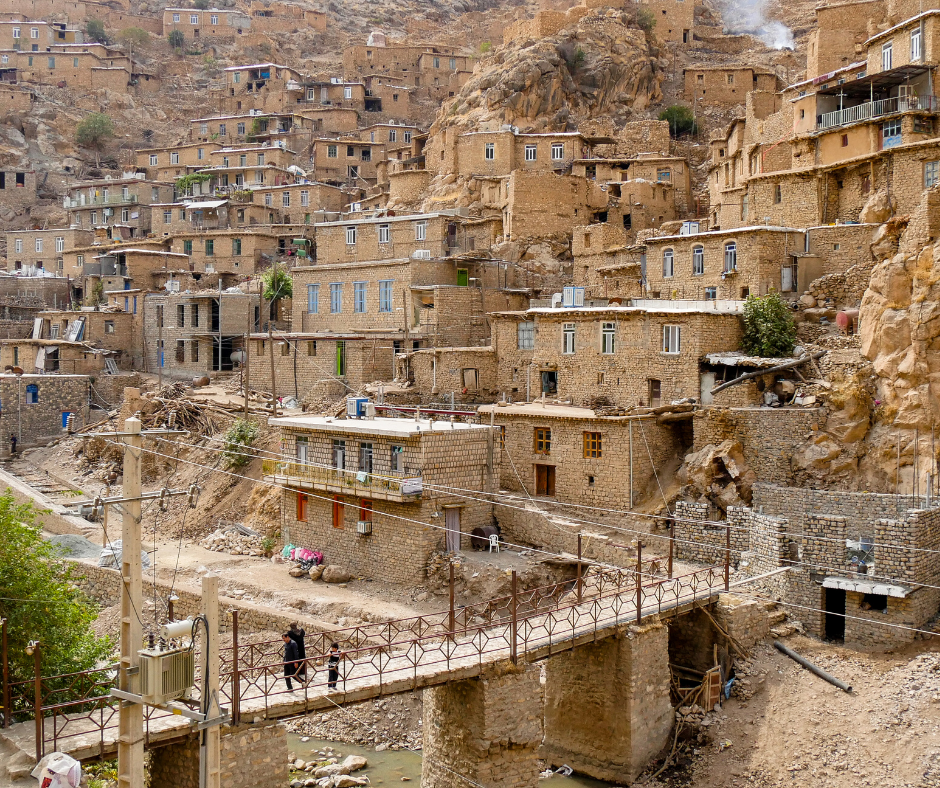
The Kurdish village of Palangan also built in the staircase style, rises steeply up the sides of a valley in the Zagros Mountains and is cut in two by an offshoot of the Sirwan River. The terraced structure of Palangan amidst the mountains makes it one of the most striking of the staircase villages of Iran.
Near the village is the fortified structure of Palangan Castle. With the arrival of the Persian King Cyrus the Great, may jews were cast into the castle and lived there for many years. The castle contains a Jewish cemetery and the neighbourhood in which is it found is called ‘Moses’. Later Zoroastrians, people who practiced an ancient fire worshipping religion inhabited the castle, before the Islamisation of the Persian peoples of Asia.
Within Palangan itself there are seven other forts attributed to the Cyaxares era, and a cemetery from the Achaemenid empire. While in Palangan try some of its local produce of pomegranate, strawberries, peach, apricot and figs. Fish dishes are among the best dishes to try while on a visit to Palangan as many of the villages thousand residents are employed in the local fishing industry.
The area of Palangan is home to spectacular waterfalls and the village itself contains 20 springs, one such spring located outside the village contains iron and sulphur and is said to help with skin diseases, respiratory issues and rheumatism.
Masuleh
Masuleh is located 55km from the city of Rasht in the mountainous Sylvan area 1050m above sea level. Masuleh is another of Iran’s staircase villages, located on a slope where the roofs of the houses below, form the streets and courtyards of the houses above. In addition to the stepped nature of the houses, the people of Masuleh have decorated their dwellings with colourful vases and other decorative accessories and will often invite you as a traveller to visit their homes.
Unlike some of the other staircase style villages of Iran, the buildings of Masuleh are not adobe style and not made of mudbrick. The buildings are made of a combination of stone, wood and clay and are relatively small with two floors. Some of the village attractions include a nature museum and cultural history museum in which you can learn about the wildlife of the province of Gilan. The four-tiered Masuleh Bazaar is also worth a visit and is the most famous in this region. The green dome of the tomb of Imam Zadeh Aoun ebn Ali stands out among the structures and is one of the most valuable monuments of the village. The adjoining museum contains works from the Timurid and Safavid eras.
Although the stepped architecture of the village is clearly the main attraction, within this village you can also see pristine forests, waterfalls, high mountains and other natural attractions.
Kandovan
Think Turkey’s Cappadocia is exclusively the home of cave villages? Well prepare to be enlightened. Kandovan is located in the north of Iran and is Iran’s very own cave village. Like the cave villages of Cappadocia, the dwellings of Kandovan are hollowed out of the soft rock of the surrounding hills, however unlike Cappadocia the caves of Kandovan are still inhabited. You can wander the terraces of the cave village of Iran, visit its cave shops and chat with the local residents on a day trip from Tabriz.
If you want to stay a bit longer in this amazing place in Northern Iran, you can stay at Kandovan’s very own (and rather spiffy) cave hotel or if you prefer a more grass roots experience you can stay at a local family run guest house.
The conical shaped houses carved into the volcanic rock are called ‘Karan’ and geographical studies show the cliffs ages range from 700 to 1500 years. Most Karans have two floors, but in some cases, they may have up to four. The village has many facilities ranging from a public bath, school, mosque and mill. Mosque Karan is one of the largest buildings in the village. Unique architecture and lush valleys combined with organic produce such as dairy and honey have made Kandovan one of the most popular spots in Iran.
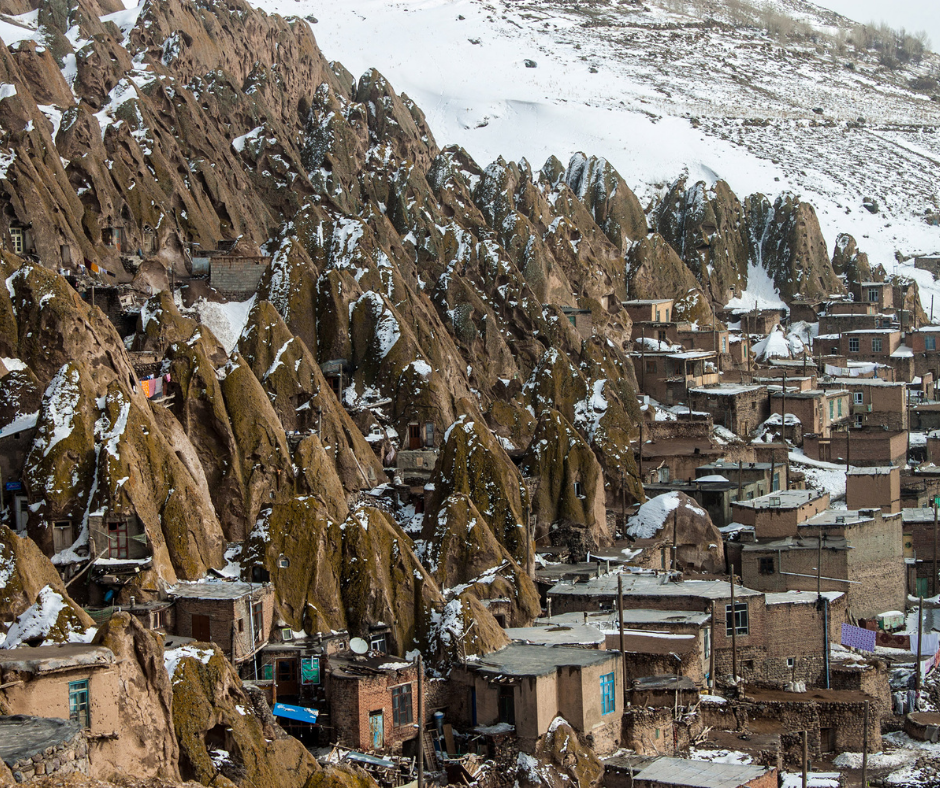
For more information or to find out about trips to these unique villages drop us a line at info@invertedatlas.com


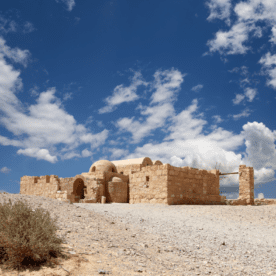


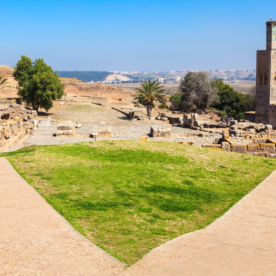
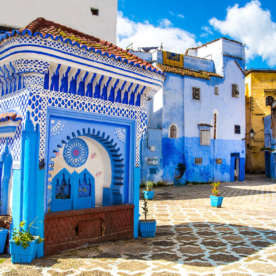
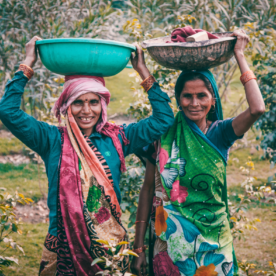
Leave a Reply